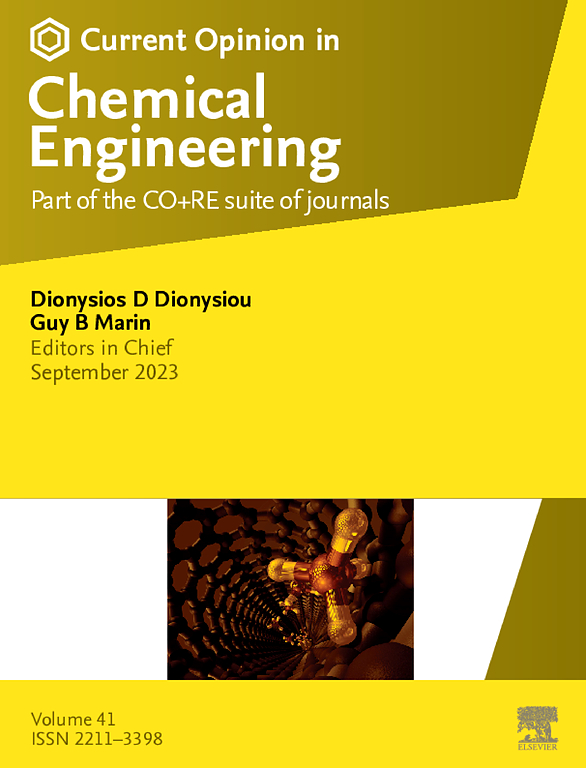A review on scale-up approaches for ultrasound-assisted extraction of natural products
IF 6.8
2区 工程技术
Q1 BIOTECHNOLOGY & APPLIED MICROBIOLOGY
引用次数: 0
Abstract
The extraction of bioactive compounds from natural sources is a topic of great interest. In this sense, ultrasound-assisted extraction (UAE) has emerged as a promising technology for fast and efficient extraction of natural products without high organic solvent consumption. However, most studies on UAE are focused on laboratory scale. In order for this technology to be suitable for industrial applications, more pilot studies need to be developed and discussed. In this sense, this review aimed to address scale-up applications of UAE of natural products developed from 2019 to the first semester of 2024. Applications involving hydrodynamic cavitation were not included in this review. Key parameters related to ultrasound were addressed, such as reactor configuration, process type (batch or continuous), frequency, and others. Furthermore, the major challenges associated with the upscaling of UAE, as well as current trends and future perspectives were discussed. It was observed that flow cells were the main reactor type used in scale-up UAE of natural products and that flow-through was the main operation mode. The use of these devices enabled processing of higher sample volumes, possibly due to more homogeneous energy distribution in the reactor. Hence, further enhancements in this area should be expected. Furthermore, phenolic compounds were the main targets of extraction and low frequencies (<100 kHz) were used. However, a challenge remains regarding the lack of essential information in several publications, which makes comparison between studies difficult, as well as their reproduction. Nevertheless, scale-up UAE of natural products is a promising research area.
超声辅助提取天然产物的放大方法综述
从天然资源中提取生物活性化合物是一个非常有趣的话题。从这个意义上说,超声辅助提取(UAE)已经成为一种有前途的技术,可以快速有效地提取天然产物,而不需要消耗大量的有机溶剂。然而,大多数关于阿联酋的研究都集中在实验室规模上。为了使该技术适用于工业应用,需要开展和讨论更多的试点研究。从这个意义上说,本综述旨在解决2019年至2024年上半年开发的天然产品在阿联酋的大规模应用问题。涉及流体动力空化的应用未包括在本综述中。讨论了与超声相关的关键参数,如反应器配置、工艺类型(间歇或连续)、频率等。此外,还讨论了与阿联酋升级相关的主要挑战,以及当前趋势和未来前景。结果表明,流动池是天然产物放大生产中使用的主要反应器类型,流动池是主要的操作方式。使用这些装置可以处理更高的样品体积,可能是由于反应器中更均匀的能量分布。因此,应该期望在这方面有进一步的增强。此外,酚类化合物是提取的主要目标,并使用低频率(<100 kHz)。然而,仍然存在一个挑战,即一些出版物中缺乏基本信息,这使得研究之间的比较和复制变得困难。然而,扩大天然产品的规模是一个有前途的研究领域。
本文章由计算机程序翻译,如有差异,请以英文原文为准。
求助全文
约1分钟内获得全文
求助全文
来源期刊

Current Opinion in Chemical Engineering
BIOTECHNOLOGY & APPLIED MICROBIOLOGYENGINE-ENGINEERING, CHEMICAL
CiteScore
12.80
自引率
3.00%
发文量
114
期刊介绍:
Current Opinion in Chemical Engineering is devoted to bringing forth short and focused review articles written by experts on current advances in different areas of chemical engineering. Only invited review articles will be published.
The goals of each review article in Current Opinion in Chemical Engineering are:
1. To acquaint the reader/researcher with the most important recent papers in the given topic.
2. To provide the reader with the views/opinions of the expert in each topic.
The reviews are short (about 2500 words or 5-10 printed pages with figures) and serve as an invaluable source of information for researchers, teachers, professionals and students. The reviews also aim to stimulate exchange of ideas among experts.
Themed sections:
Each review will focus on particular aspects of one of the following themed sections of chemical engineering:
1. Nanotechnology
2. Energy and environmental engineering
3. Biotechnology and bioprocess engineering
4. Biological engineering (covering tissue engineering, regenerative medicine, drug delivery)
5. Separation engineering (covering membrane technologies, adsorbents, desalination, distillation etc.)
6. Materials engineering (covering biomaterials, inorganic especially ceramic materials, nanostructured materials).
7. Process systems engineering
8. Reaction engineering and catalysis.
 求助内容:
求助内容: 应助结果提醒方式:
应助结果提醒方式:


